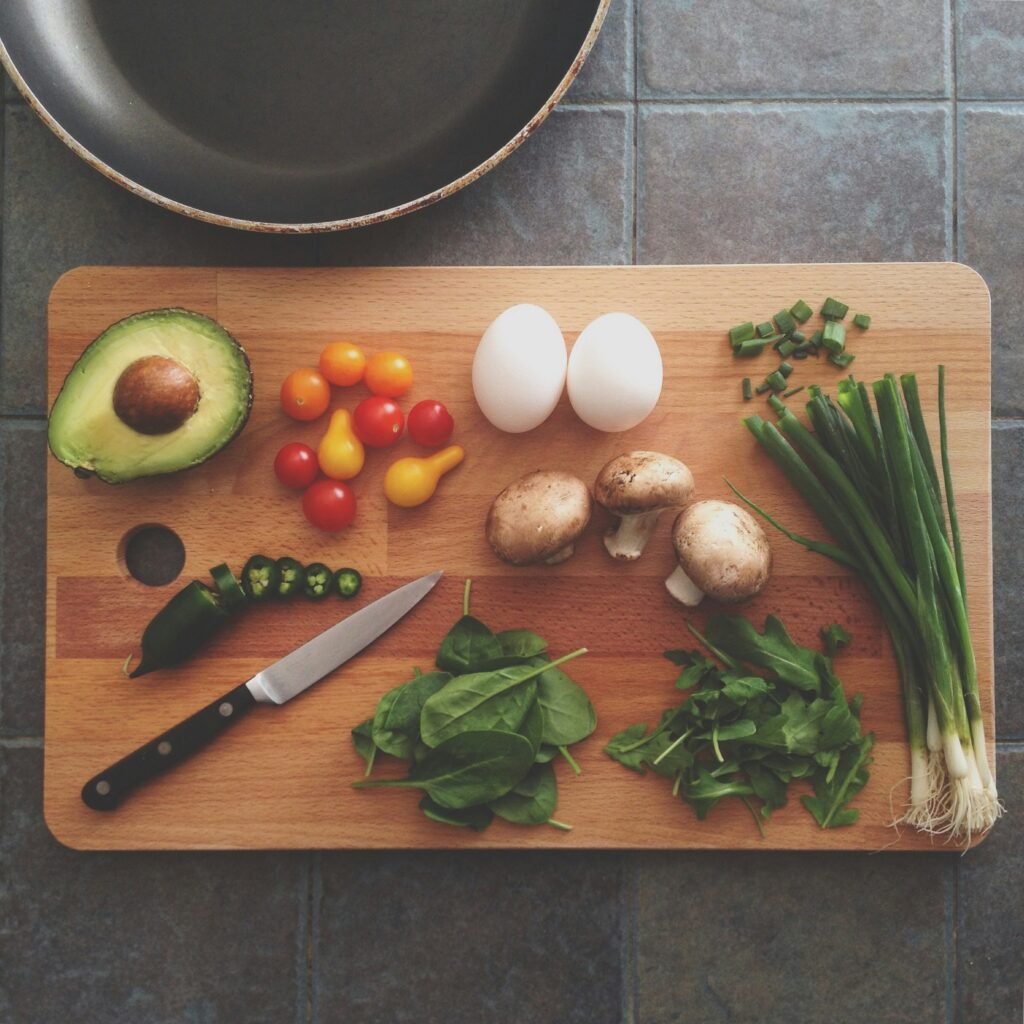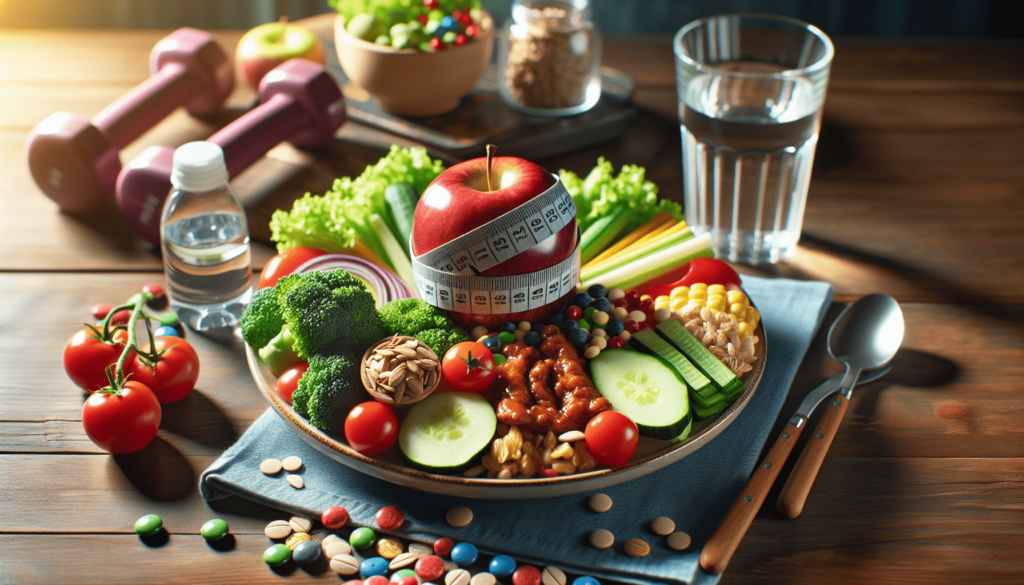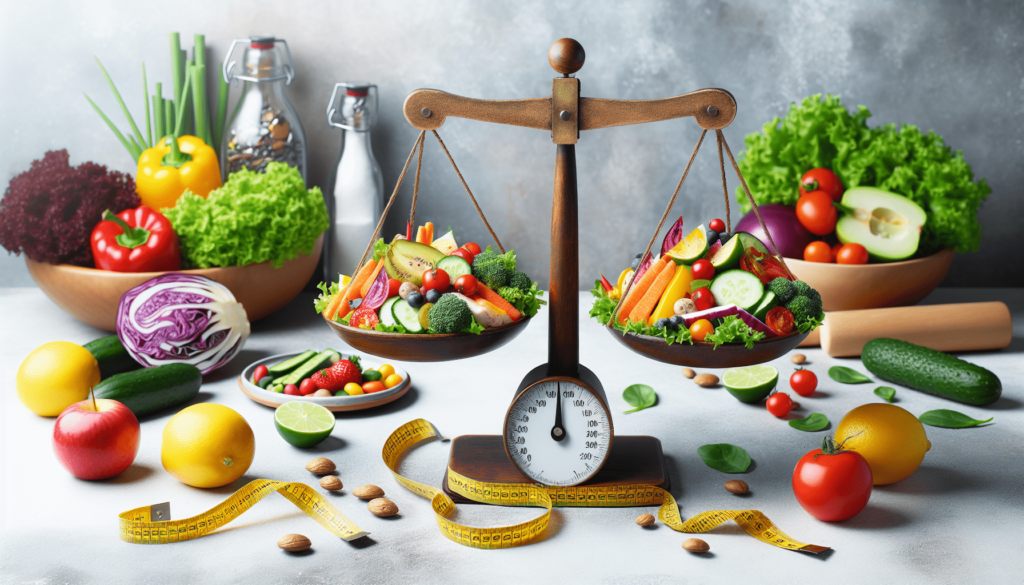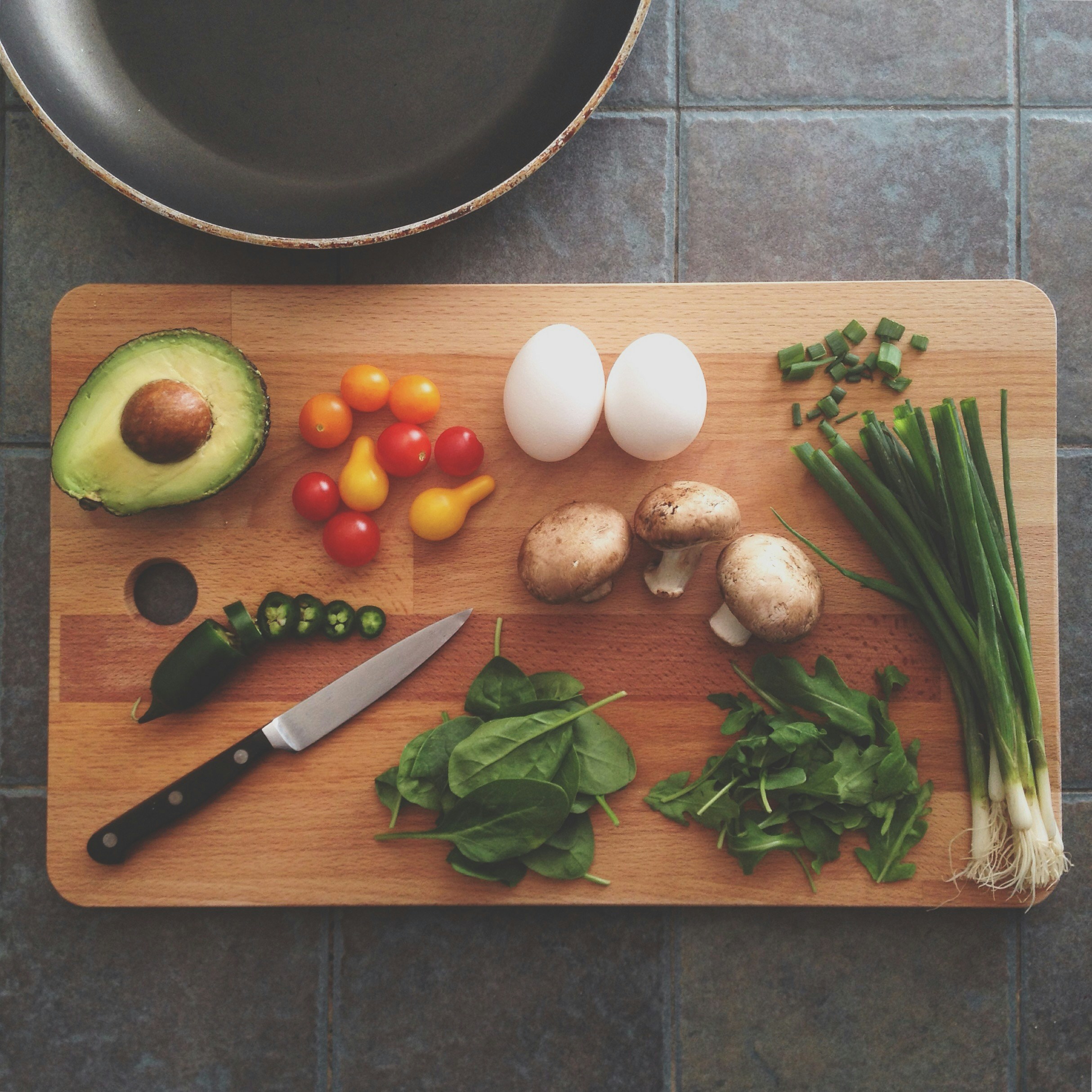Are you a food lover who wants to shed those extra pounds? Look no further! “Delicious and Nutritious: The Ultimate Guide to Weight Loss for Food Lovers” is here to help. This comprehensive guide is tailored specifically for people like you who appreciate the joy of eating but still want to maintain a healthy weight. Packed with mouthwatering recipes, expert advice, and practical tips, this guide will show you that you can have the best of both worlds: delicious food and a slimmer waistline. Say goodbye to restrictive diets and say hello to sustainable weight loss without compromising on taste. Get ready to embark on a flavorful journey towards a healthier lifestyle.

This image is property of images.unsplash.com.
Mindful Eating
Understanding Hunger and Fullness
When it comes to weight loss, practicing mindful eating is crucial. This involves paying attention to your body’s hunger and fullness cues. Many people tend to eat out of habit or for emotional reasons, rather than true physical hunger. By learning to differentiate between physical hunger and other triggers, you can make more informed choices about when and how much to eat. Tuning in to your body’s signals of hunger and fullness allows you to eat when you are genuinely hungry and stop when you are comfortably satisfied.
Paying Attention to Food Choices
Being mindful of your food choices is an important aspect of successful weight loss. Instead of simply reaching for whatever is convenient or tastes good in the moment, take the time to consider the nutritional value of the foods you consume. Opt for nutrient-dense options that are packed with vitamins, minerals, and other essential nutrients. This means choosing whole foods like fruits, vegetables, lean proteins, and whole grains over processed or sugary foods that provide little to no nutritional value.
Savoring Each Bite
Eating mindfully also means savoring each bite and truly enjoying the experience of eating. Slow down and take the time to appreciate the flavors, textures, and aromas of your food. This not only enhances your overall dining experience, but it also allows your brain to register the satisfaction of eating more effectively. By savoring each bite, you are more likely to feel satisfied with smaller portions and less likely to overeat.
Healthy Swaps
Replacing Empty Calories with Nutritious Foods
One of the keys to successful weight loss is replacing empty calories with nutritious foods. Empty calories refer to foods that are high in calories but low in nutritional value, such as sugary snacks, processed foods, and sugary beverages. Instead of indulging in these empty-calorie foods, opt for nutrient-dense alternatives. For example, swap out soda for water or herbal tea, replace white bread with whole grain bread, and choose fresh fruit over sugary desserts.
Choosing Whole Grain Options
When it comes to carbohydrates, choosing whole grain options is a healthier choice for weight loss. Whole grains are less processed than refined grains, meaning they retain more of their natural nutrients and fiber. This can help you feel fuller for longer and prevent overeating. Incorporate whole grain foods such as brown rice, quinoa, whole wheat pasta, and oatmeal into your meals to boost your intake of essential nutrients and promote weight loss.
Using Alternative Cooking Methods
Another aspect of healthy swaps for weight loss involves using alternative cooking methods. Instead of frying foods in unhealthy fats, opt for baking, grilling, or steaming. These cooking methods require little or no added fats, reducing the calorie content of your meals. By making these healthier cooking choices, you can still enjoy delicious meals while supporting your weight loss goals.
Portion Control
Measuring and Weighing Food
Portion control plays a significant role in achieving and maintaining weight loss. Measuring and weighing your food can help you become more aware of appropriate portion sizes. Investing in a kitchen scale and measuring cups can make this process easier. By accurately measuring your food portions, you can avoid unintentionally consuming excessive calories and better manage your overall calorie intake.
Using Smaller Plates and Bowls
An effective strategy for portion control is using smaller plates and bowls. Research has shown that people tend to eat larger portions when using larger dinnerware. By downsizing your plate or bowl, you can trick your brain into perceiving a larger portion, which can help you feel more satisfied with less food. This simple swap can make a significant difference in managing your portion sizes and ultimately supporting your weight loss goals.
Eating Slowly and Mindfully
Eating slowly and mindfully is not only important for savoring your food, but it also aids in portion control. When you eat slowly, you give your brain the opportunity to register feelings of fullness. This can prevent you from overeating and help you recognize when you have had enough to eat. Additionally, by paying attention to each bite and eating mindfully, you are more likely to be satisfied with smaller portions and avoid mindless snacking.
Balanced Meals
Incorporating Protein, Carbohydrates, and Healthy Fats
Creating balanced meals is essential for sustainable weight loss. Each meal should consist of a combination of protein, carbohydrates, and healthy fats to provide your body with optimal nutrition. Protein helps keep you feeling full, carbohydrates provide energy, and healthy fats support various bodily functions. Incorporate lean proteins like chicken, fish, tofu, or legumes, complex carbohydrates such as quinoa or sweet potatoes, and healthy fats like avocados or nuts into your meals to ensure you are getting a balanced and satisfying plate.
Building a Colorful Plate with Fruits and Vegetables
Another key aspect of balanced meals is filling your plate with a variety of colorful fruits and vegetables. Different colored fruits and vegetables provide different vitamins, minerals, and antioxidants, so it’s important to include a variety in your diet. Aim for at least half of your plate to be filled with fruits and vegetables to ensure you are getting a wide range of nutrients and promoting weight loss.
Including Fiber for Satiety
Fiber is an often overlooked component of a healthy and balanced meal, but it is crucial for weight loss. Not only does it help maintain proper digestion, but it also promotes feelings of satiety, helping you feel fuller for longer. Incorporate high-fiber foods such as whole grains, legumes, fruits, and vegetables into your meals to increase your fiber intake and support your weight loss efforts.

This image is property of images.unsplash.com.
Healthy Snacking
Choosing Nutrient-Dense Snacks
Snacking can be a downfall for many people trying to lose weight, but it doesn’t have to be. The key to healthy snacking is choosing nutrient-dense options. Instead of reaching for the chips or cookies, opt for snacks that provide valuable nutrients and support your weight loss goals. Some examples include Greek yogurt with berries, carrot sticks with hummus, or a handful of nuts. These snacks are satisfying and packed with essential nutrients, keeping you fueled throughout the day.
Pre-portioning Snacks for Portion Control
To avoid mindless snacking or overeating, it’s helpful to pre-portion your snacks. Instead of eating directly from the package, portion out snacks into individual servings. This not only helps with portion control, but it also prevents mindless munching and allows you to be more mindful of your food choices. By having pre-portioned snacks readily available, you can grab a healthy option when hunger strikes without the risk of consuming excessive calories.
Combining Protein and Fiber for Lasting Energy
Aim to incorporate both protein and fiber into your snacks for lasting energy and satiety. Protein-rich snacks help keep you full, while fiber adds bulk to your snacks without adding excess calories. Combining these two nutrients can help stabilize blood sugar levels, prevent energy crashes, and keep you satisfied until your next meal. Some ideas for protein and fiber-rich snacks include a handful of almonds with an apple, a hard-boiled egg with whole grain crackers, or a Greek yogurt with chia seeds.
Meal Prep
Planning and Preparing Meals in Advance
Meal prepping is a game-changer for weight loss. By planning and preparing your meals in advance, you can have healthy options readily available and avoid the temptation of unhealthy choices. Dedicate some time each week to plan your meals, create a shopping list, and prepare components such as cutting vegetables or cooking proteins. This ensures that you have nutritious options on hand and eliminates the reliance on last-minute unhealthy takeout meals.
Batch Cooking for Convenience
Batch cooking is a great strategy to save time and ensure you always have a healthy meal option available. Set aside a designated day each week to cook larger quantities of your favorite meals. Portion them out into individual containers and store them in the freezer or refrigerator for later use. This way, you can simply reheat and enjoy a home-cooked, healthy meal without the hassle of cooking from scratch every day.
Storing and Freezing Meals Properly
Proper storage and freezing of prepped meals are essential to maintain their quality and safety. Invest in a set of quality food storage containers that are freezer-safe and have airtight lids. Label each container with the date and contents to keep track of what you have on hand. When freezing meals, ensure they have cooled down completely before packaging and leave enough space for expansion. Properly stored prepped meals can be a lifesaver on busy days, allowing you to enjoy a nutritious meal without the stress.

This image is property of images.unsplash.com.
Eating Out Smartly
Researching and Choosing Healthy Restaurants
Eating out doesn’t have to derail your weight loss efforts. Before heading out to a restaurant, take the time to research and choose a place that offers healthier options. Many restaurants now have nutrition information available online, allowing you to make informed choices beforehand. Look for restaurants that offer a variety of vegetables, lean proteins, and whole grain options. By choosing a restaurant that aligns with your weight loss goals, you can enjoy eating out while staying on track.
Opting for Grilled, Steamed, or Roasted Options
When dining out, be mindful of how your food is prepared. Opt for grilled, steamed, or roasted options instead of fried or sautéed dishes. These cooking methods typically use less added fats and result in lower calorie dishes. Grilled chicken, steamed vegetables, or roasted fish are healthier choices that can still be delicious and satisfying. Additionally, ask for dressings and sauces to be served on the side, allowing you to control the amount you consume.
Avoiding Soft Drinks and Sugary Beverages
Another important aspect of eating out smartly is to avoid soft drinks and sugary beverages. These drinks are often filled with empty calories and can quickly pile on the pounds. Opt for water, unsweetened tea, or sparkling water with a splash of citrus instead. Not only will this save you significant calories, but it will also keep you hydrated and support your overall health.
Exercise for Weight Loss
Finding Physical Activities You Enjoy
Exercise is a crucial component of weight loss and overall well-being. To stay motivated and consistent, find physical activities that you truly enjoy. Whether it’s swimming, dancing, hiking, or cycling, engaging in activities you find enjoyable increases the likelihood of sticking to your exercise routine. Experiment with different types of exercises until you find what makes you look forward to working out.
Creating a Balanced Workout Routine
Incorporating a variety of exercises into your routine is important for overall fitness and weight loss. Aim to include a mix of cardiovascular exercises, strength training, and flexibility exercises. Cardiovascular exercises such as jogging or cycling help burn calories and improve cardiovascular health. Strength training builds lean muscle mass, which boosts metabolism and promotes weight loss. Flexibility exercises improve mobility and reduce the risk of injury. By creating a well-rounded workout routine, you can maximize your weight loss efforts and achieve overall fitness.
Incorporating Cardio and Strength Training
Cardiovascular exercises and strength training are both essential for weight loss. Cardio exercises elevate your heart rate and help burn calories, while strength training builds lean muscle mass and increases metabolism. Combine both types of exercises in your routine for optimal results. Aim for at least 150 minutes of moderate-intensity cardio exercises or 75 minutes of vigorous-intensity exercises per week, along with strength training exercises two or more days a week.

Mindset and Motivation
Setting Realistic Goals and Tracking Progress
Setting realistic goals and tracking your progress is crucial for maintaining motivation during your weight loss journey. Set clear and achievable goals that align with your overall health and well-being. Break larger goals into smaller, manageable milestones to make them more attainable. Additionally, regularly track your progress, whether it’s through measurements, photos, or keeping a journal. Seeing your progress over time serves as a powerful motivator and reinforces your commitment to achieving your weight loss goals.
Finding Intrinsic Motivation for Long-Term Success
Finding intrinsic motivation is key to long-term success in weight loss. Identify your personal reasons for wanting to lose weight and connect with how achieving your goals will improve your life. Focus on the internal benefits of weight loss, such as increased energy, improved confidence, or better overall health. By finding your intrinsic motivation, you are more likely to stay committed to your weight loss journey and overcome any challenges that may arise.
Practicing Self-Compassion and Positive Thinking
Practicing self-compassion and positive thinking is essential throughout your weight loss journey. Be kind to yourself and recognize that setbacks or challenges are a normal part of the process. Instead of dwelling on negative thoughts or criticizing yourself, focus on the progress you have made and the positive changes you are making in your life. Remember to celebrate small victories along the way and maintain a positive mindset, as this will help you stay motivated and resilient.
Seeking Support
Joining Weight Loss Communities or Support Groups
Seeking support from others who are also on a weight loss journey can be incredibly valuable. Joining weight loss communities or support groups can provide you with a sense of belonging, accountability, and encouragement. Share your challenges, successes, and tips with others who understand what you are going through. These communities can offer valuable insights, inspiration, and support, making your weight loss journey less lonely and more rewarding.
Enlisting the Help of a Registered Dietitian or Nutritionist
If you need personalized guidance and support, consider enlisting the help of a registered dietitian or nutritionist. These professionals can provide expert advice tailored to your specific needs and goals. They can help you develop customized meal plans, identify nutritional deficiencies, and address any underlying issues that may be hindering your weight loss. Their expertise and guidance can significantly enhance your success on the path to weight loss.
Sharing Your Journey with Friends and Family
Last but not least, sharing your weight loss journey with friends and family can provide an added layer of support. Communicate your goals and challenges with your loved ones, and they can provide encouragement, accountability, and understanding. Include them in your healthy lifestyle changes, such as involving them in meal prepping or finding new active hobbies to enjoy together. By involving your social circle, you create a positive environment for weight loss and further strengthen your commitment to achieving your goals.
In conclusion, weight loss for food lovers doesn’t have to be a daunting or restrictive process. By incorporating mindful eating, making healthy swaps, practicing portion control, creating balanced meals, choosing healthy snacks, meal prepping, eating out smartly, exercising regularly, fostering a positive mindset, and seeking support, you can achieve sustainable and enjoyable weight loss. Remember that every step towards a healthier lifestyle is a step in the right direction, and with dedication and consistency, you can achieve your weight loss goals while still savoring and enjoying delicious food.


